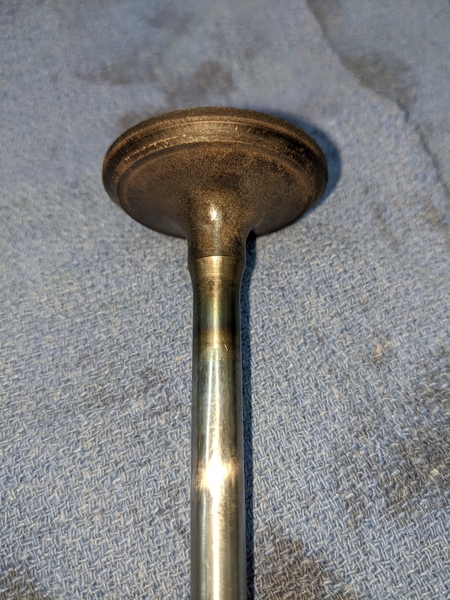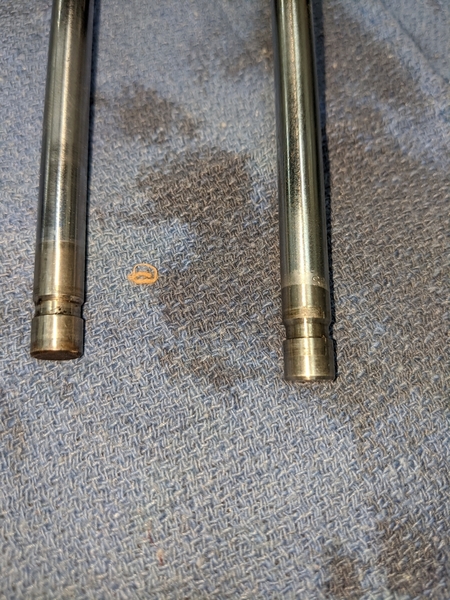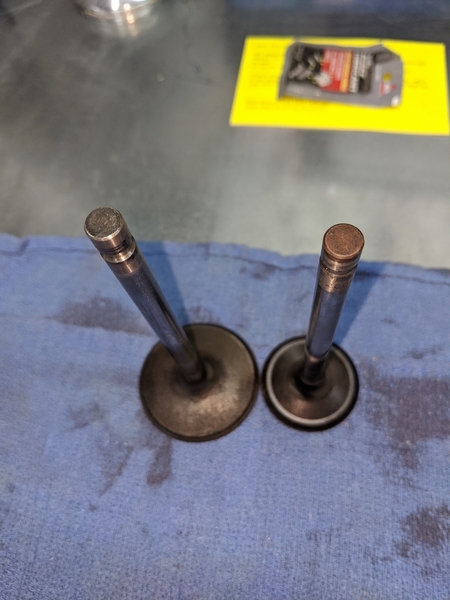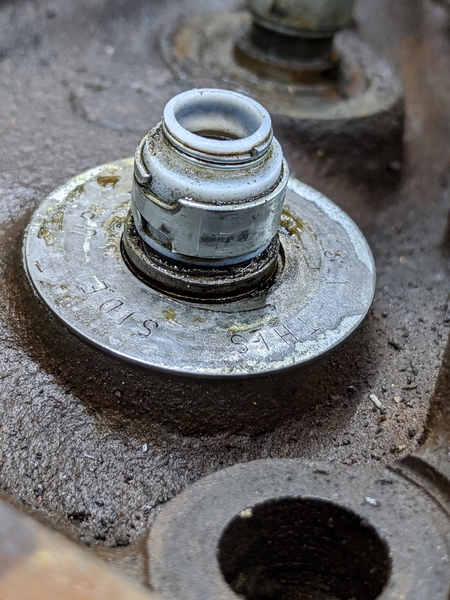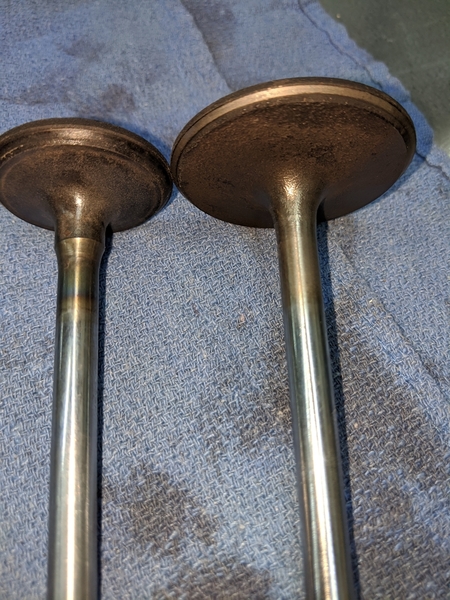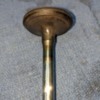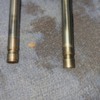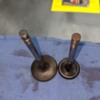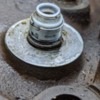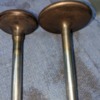I purchase a used set of D1AE 4V quenched chamber heads. They've been rebuilt with what looks like Stainless Steel intakes (because there is no rust on the valve stem tip, see picture) and steel exhausts have a mild rust on the stem tip, all the valves are like this.
The one concern I have is the exhaust valves, they look to be welded due heat discoloration where the head and stem meet and could have been welded? Can someone confirm? Just want to make sure they are one piece valves. My thought is if they are a two piece welded valve I will/should replace them?
Also the spring seats have been cut to accept two springs and a damper, so triple springs. I don't know what they are rated at. I'd like to keep the springs, and retainers. Is it advisable to get new keepers?
Also I will change out the seals....the ones installed are Comp Cam Valve Seals, they are supposed to be used with double springs from what I've read, while Vinton seals are supposed to be used with triple springs. Also I don't believe the Vinton's will fit due to guide diameter needed at .530, the Comp Cam seals are listed at .50 so I assume the guide had to be cut down. Therefore, I may be forced to stay with the Comp Cams seals which then may force me to go with double valve springs, and not sure I can do that since the spring seats in the head have been machined flat?
My goal is to get my motor back in the car, have a dependable driver I can take most anywhere, including longer trips. I have a 72L, flat top pistons, may go with a little hotter then stock cam grind with hydraulic flat tappet lifters.
Steps: #1, decide which parts I keep and which I toss and replace. #2, If I keep these valves have the valves and seats ground, #3, have guides checked, #4, have the head gasket surfaces cleaned up, #5 decided on valve rockers.
Thanks in advance for suggestions.


